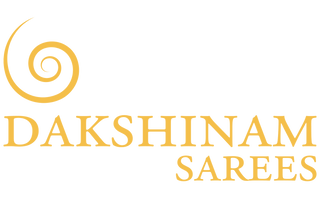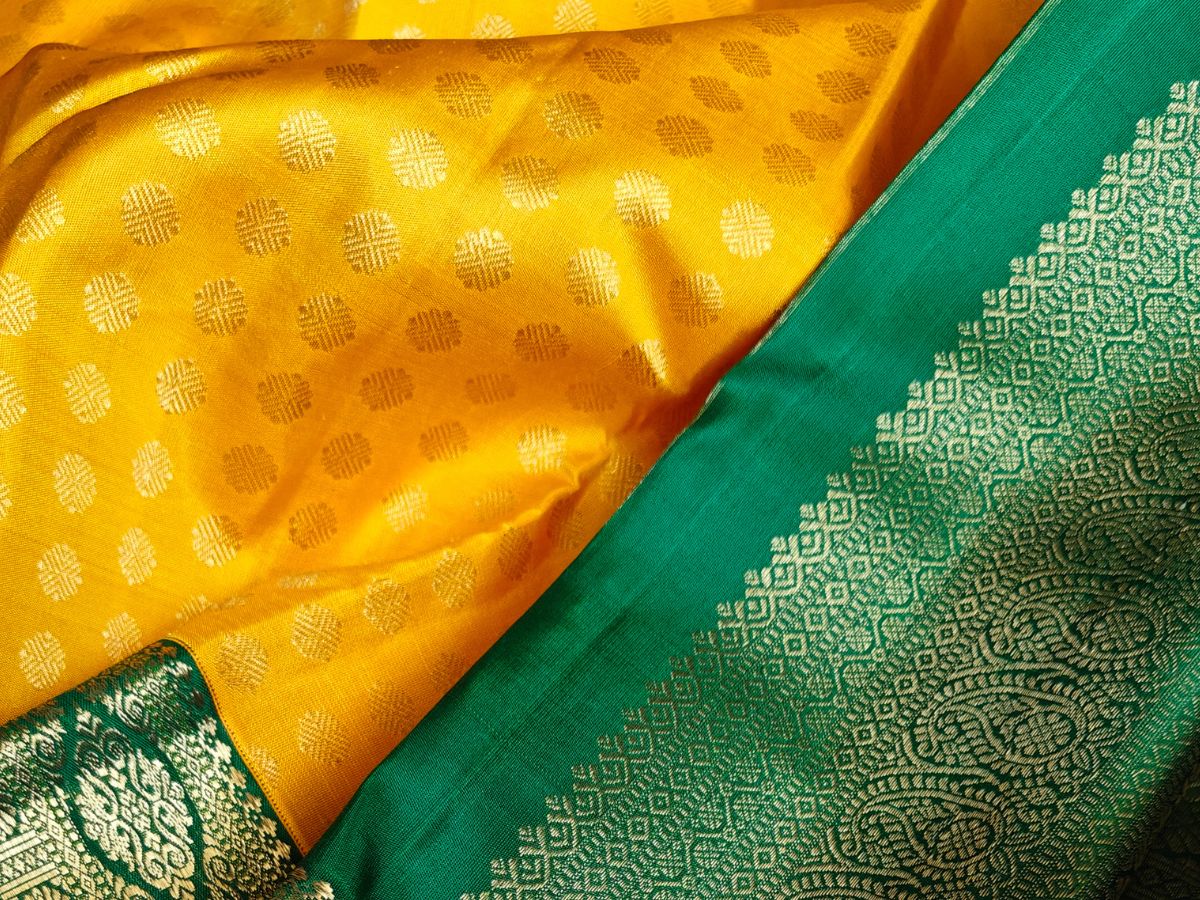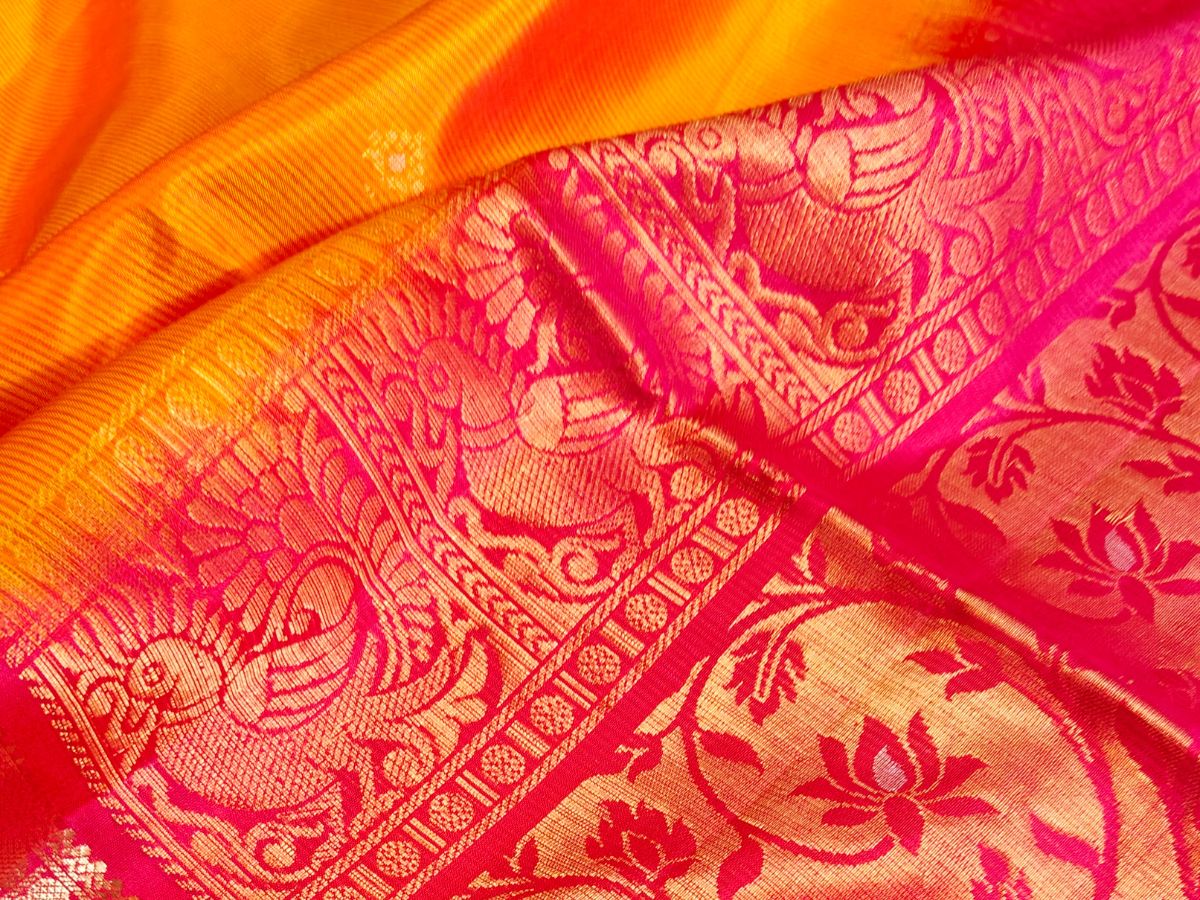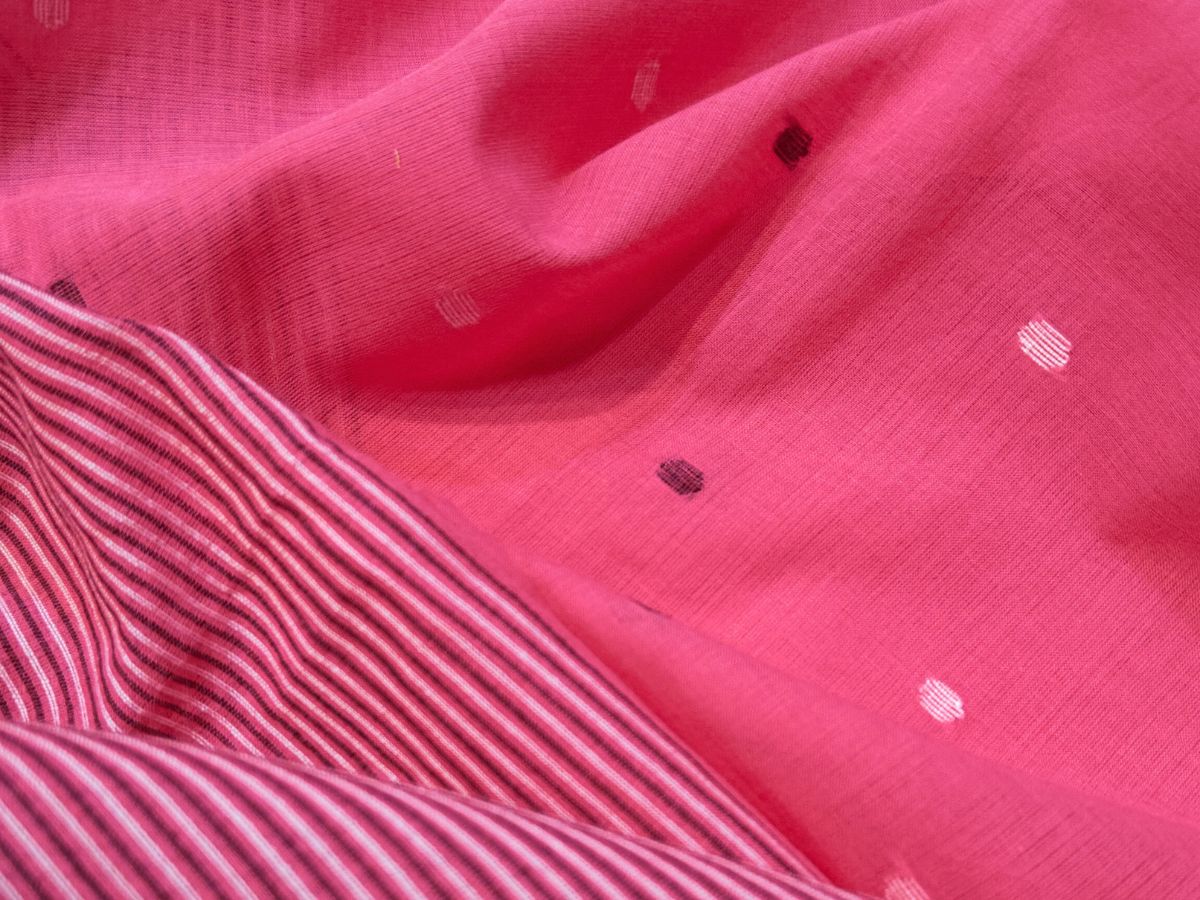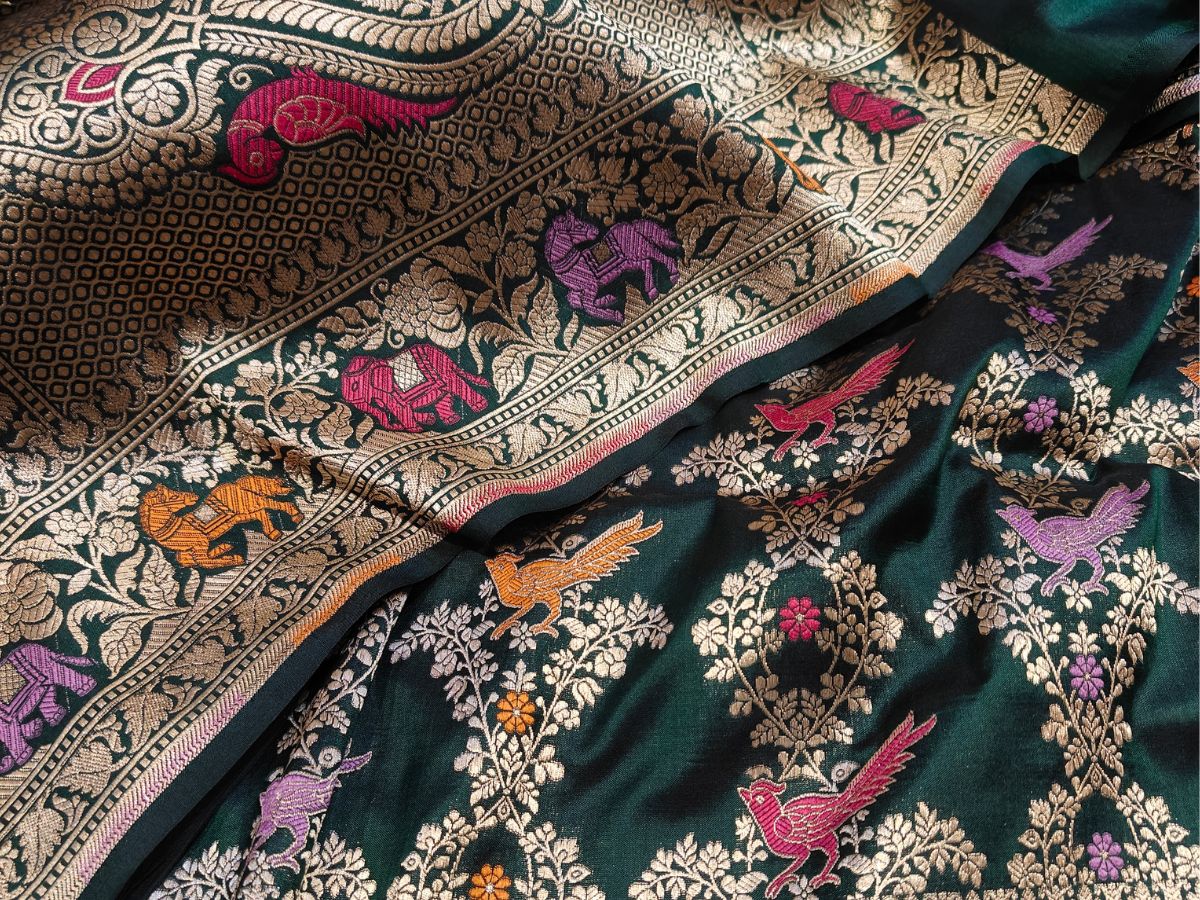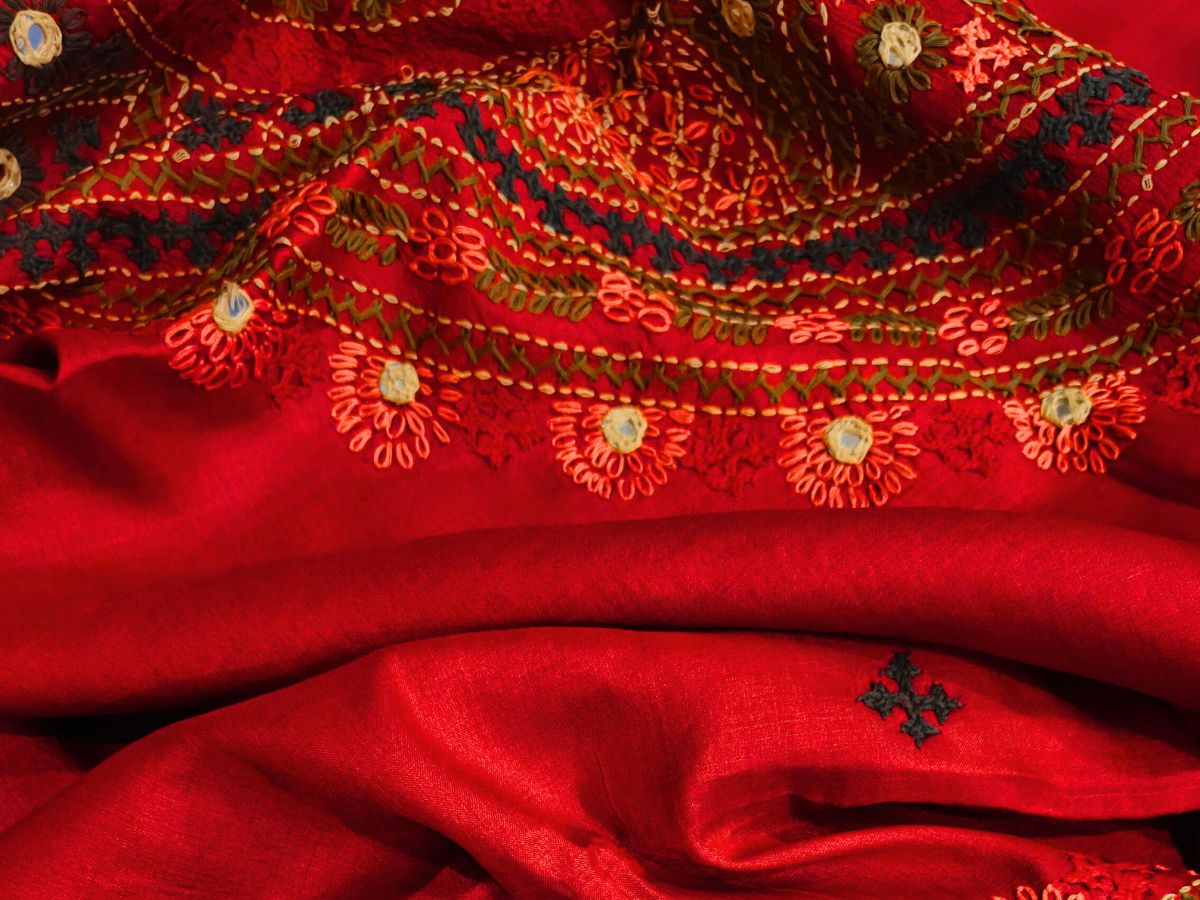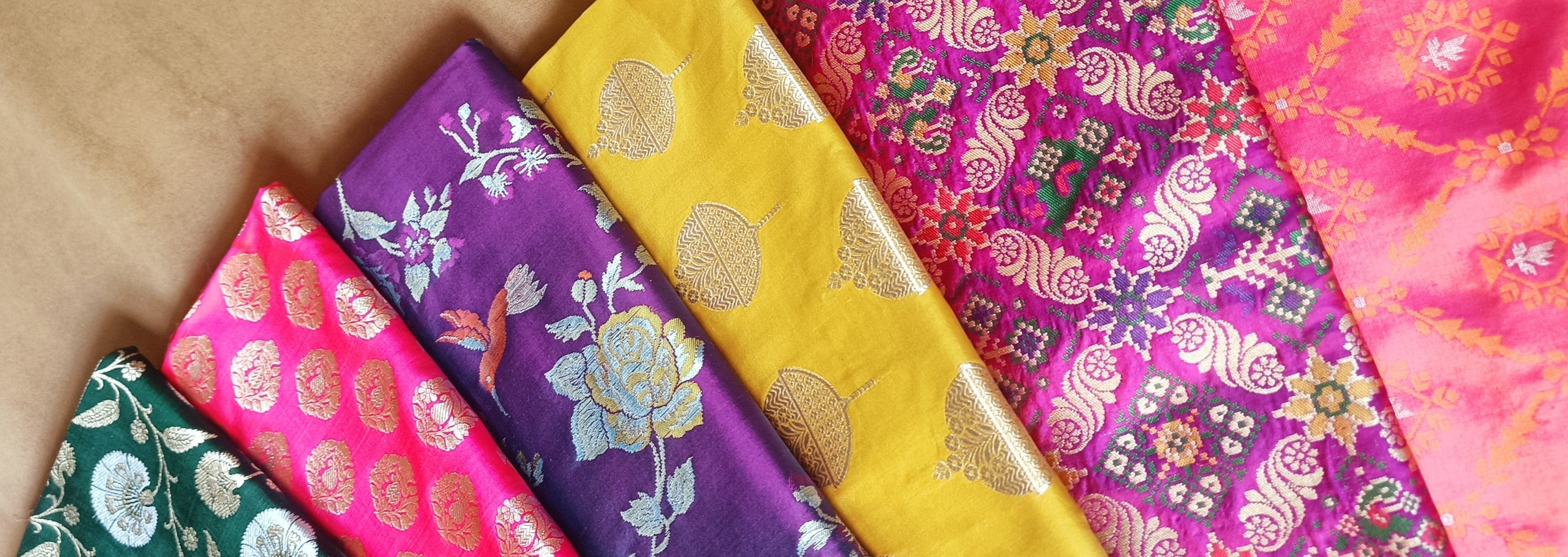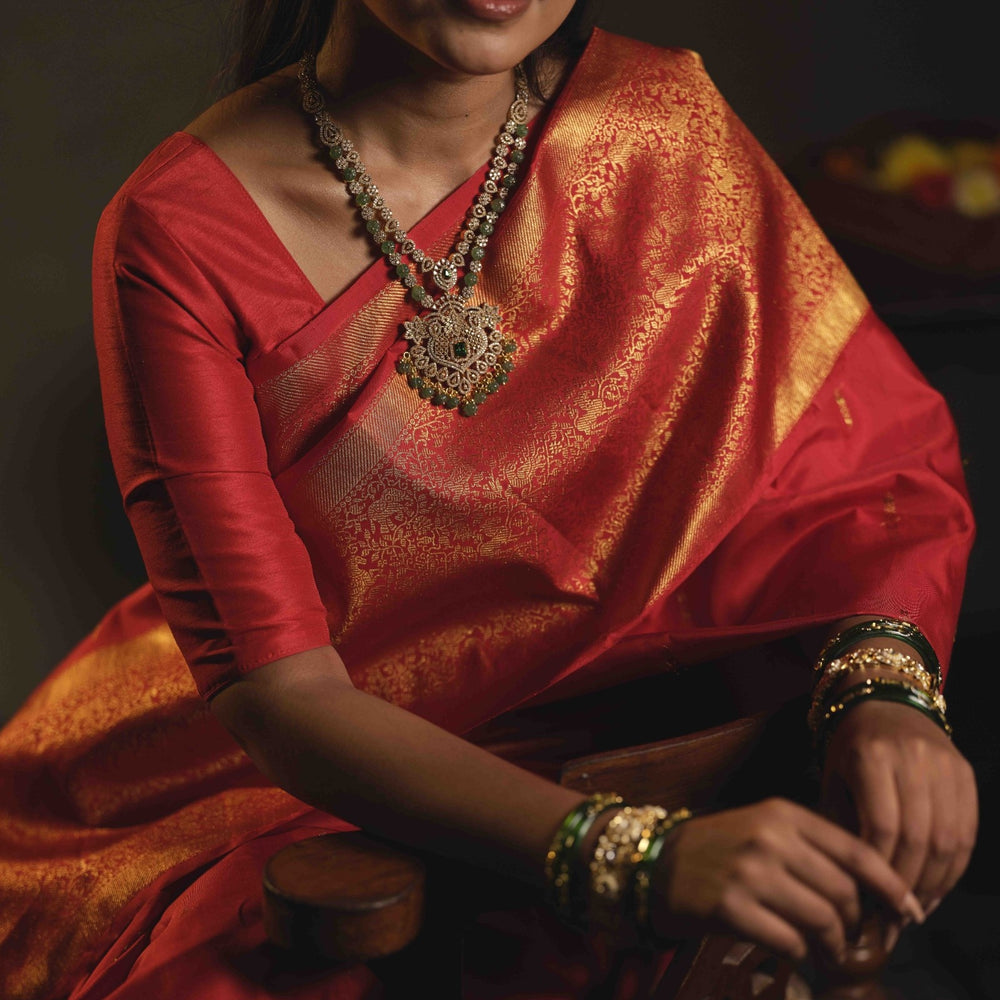Kanjivarams: The South Indian Spectacle of Opulence

The most erratic, enigmatic, color-obsessed part of South Indian weaving is the Kanjivarams, attesting discernible features in technique. All the elements that come together to make the Kanjivaram saree a sheer work of meaningful art, are its bold color contrast, material combinations, and characteristic design vocabulary designed with grace and dynamism that is quite distinct.
Kanjivaram is the essence of the traditional culture of the South Indian race eliciting an aesthetic response.
Motifs – A Rendition of symbolic connotations
Deeply rooted in the artistic traditions and echoing the essence of the land and the culture of the people, motifs have served as the element of decoration, fertility, and prosperity.
Motifs ranging from elaborate to recurring ones have eternally designed every art form encompassing sculptures, jewelry, and textiles. The hallmark of a Kanjivaram saree is the motifs that serve as inspiration from symbols from temple architecture, paintings, sculptures, Tamil literature, nature, and classical dance postures. The vintage motifs have for generations been sourced from the intricate carvings on the pillars, walls, and vimanas of the Kailasanatha, Ekambreswara, Varadaraja Perumal, and Vaikunta Perumal temples. A Kanjivaram flaunts patterns in the udal (body) composed of buttas, motifs, and geometric patterns beautifully positioned to break the monotony of a single hue.
The Ornate Ornamentation –
The iconographies of the Kanjiivaram weave with the cultural design aesthetics are the inclusion of temple figurines and mythological stories into its design.
The topographical influence: The weavers aesthetically craft this weave depicting classical motifs inspired by nature incorporating flora and fauna like Hamsa (the Swan), Kamala (the lotus), Kalpa Vriksha (the Tree of Life), Purna Kumbha (the Vase of plenty), Yanai (the elephant), Simha (the lion), mayil (the peacocks), and kizhi (the parrot).
The Paradigm: The Valli (creeper-vines), Muthu-kattam (pearls), golusu (anklets), madulai moggu (pomegranate buds), lavanga poo (clover), pulaiyar moggu (small triangular turmeric interpretation of Lord Ganesha), bogudi kodi (creeper or bogudi vine) are tiny consecutive designs that run across the length of the karai (border) or breadth of the munthani (Pallu).
The classic vintage: The designs that have embellished the weave for eternity are the malli moggu (jasmine bud), mangai (mango), veldhari (spear of Lord Murugan), rudraksham (the bead of Lord Shiva), neli (a type of finger ring), aathi vazhai (horizontal stripes), kottadi (checks), vaira oosi (diamond needles), kuyilkann (cuckoo’s eyes) and mayilkann (peacock eyes – a miniscule dot in a wide composition) and the muthu kattam (broad checks) designs.
The mythological motifs: Inspired from the many Hindu temples and dexterously sculpted into the pillars, corridors, and the entrances are the yazhimugans / yalli / yazhi (a part-lion, part-elephant, or part-horse motif), annapakshi / annam (swan), and the ghandaberunda / iruthalaipakshi (Two-headed eagle).
Toned Hues with threads of Gold-
The Sangam literature has detailed references to Indian dyes, with Indigo being the most common vegetable dye and the cotton Kanchi sarees with earthy tones in bright contrasting hue borders lending a subtle charm.
The most prominent character of Kanjivaram sarees is the use of bold and high degrees of contrasting hues that enthrall the onlookers. Beautiful locally spoken Tamil names adorn the many shades of hues used for weaving this classic. Innovatively derived from nature, utensils, and food, these hues evoke a visual and emotional connect.
The sarees with hues namely kempu (crimson), pachai (green), paasai (olive), manjal (turmeric) are valued for ceremonies relating to birth, marriage, and death during which they are used in their unbleached form or sometimes dyed or sprinkled with turmeric or kumkum (burnt turmeric). Traditionally, a pure black saree is offered to the woman on the ceremony of her first pregnancy known as ‘Valai kappu’ or ‘seemantham’
Hues like kathiripoo (brinjal hue), elumichai (lemon), kesari (saffron), naval pazham (jamun fruit), pon vandu (beetle), vadamalli (bachelor’s button flower), maanthulir (shot hue of tender mango leaves shifting in shades of orange and pink), ennai arakku (shot hue of violet and brown), mayil kazhuthu (peacock’s neck), Kizhi pachai (Parrot green), oodha (shot of violet and purple), arukku (a rosewood hue, derived from lac, a resin secreted by insects), karu neelam (indigo), maa pachani (mango green), eera manjal (freshly uprooted turmeric), and paaku (maroon and brown hue, inspired by the betel nut) are very trendy in the kanjivarams.
The zari: A true labor of luxury – The centuries-old technique of weaving pure metallic yarns made of pure gold and silver are intrinsic to the culture. The artisanal process involves large chunks of silver molded into very fine yarn by passing it under pressurized rotating rollers. Kanjivaram draws its metallic thread from Surat in Gujarat, the world’s largest producer of zari and also the local Muslim population. Popularized during the Mughal era, the port of Surat was linked to the Meccan Pilgrimage route thus introducing this ancient craft in India.
Pinstripes or kosi maram, also known as Oosivanam, are combined with the korvai (three shuttle weave) and reappear in the central band of mundanai (pallu) referred as nadu kambi. The pinstripes in the silk transforms into the zari gold stripes called the vaira oosi.
An insignia of nuptial bliss-
The Statement apparel for every bride, Kanjivaram signifies the sanctities of the wedding ceremonies of a traditional South Indian wedding. The muhurtham saree in hues of yellow, green, and vermilion carries a rettai pettu (double row) border to signify auspiciousness. The kottadi checkered saree worn during the nuptials are equally popular representing the perpetual relationship between the bride and the groom. The traditional nine-yard koorai pudavai is designed with the arai maadam (half-diamond, wall lamp niche) pettu that appears uniform in the reverse and front symbolizing equality in a relationship.
The traditional wedding attire for a South Indian groom is a ‘ven pattu veshti’ or a white silk dhoti, specialized in border sporting the traditional ‘mayil kann’ patterns. The conventional 4 or 8 muzham veshti comprises of the pancha kacchams worn along with the angavasthrams (fabric worn over the shoulders).
Now that you know what gives Kanjivaram its distinct fame, you can fervently swear by this gorgeous work of silk art.
A symbol of true sanctity and purity of the traditions, we at Dakshinam Sarees craft this classic tale of royalty with a perfect balance of craftsmanship and allure.
